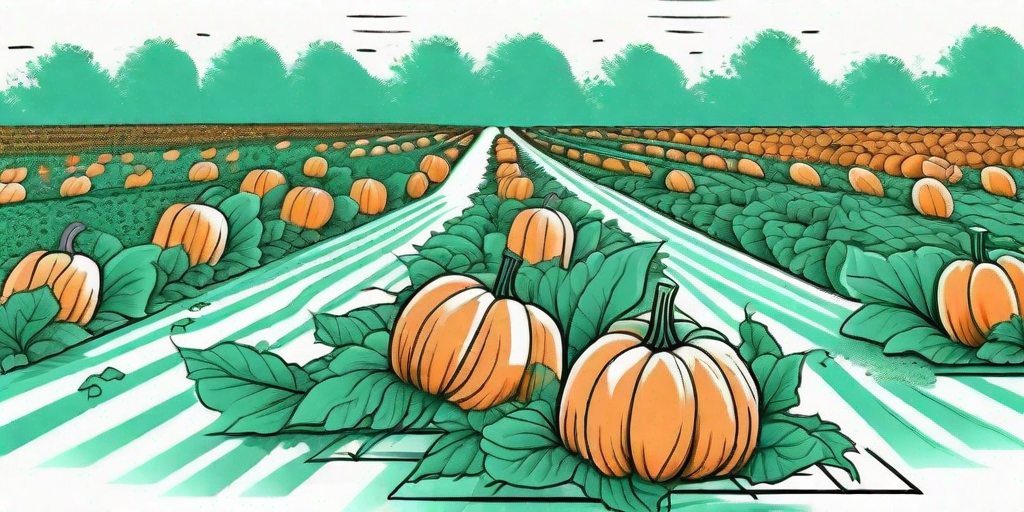
Welcome to the world of pumpkins, where size does matter. Whether you're a seasoned gardener or a greenhorn, one thing is clear - you want your pumpkins to be the envy of the neighborhood. And that's where we come in. We're here to guide you through the maze of fertilizers to give your pumpkins the boost they need to grow big, bold, and beautiful. So, put on your gardening gloves, grab your trowel, and let's dive into the dirt.
The Importance of Fertilizer
First things first, let's chat about why fertilizer is your pumpkin's best friend. You see, pumpkins are a bit like teenagers - they're always hungry. And just like teenagers, they need the right nutrients to grow. That's where fertilizer comes in. It's like a multivitamin for your pumpkins, providing them with the essential nutrients they need to grow and thrive.
But not all fertilizers are created equal. Some are high in nitrogen, which is great for leaf growth but not so great for fruit development. Others are high in phosphorus, which is essential for root development and fruiting. And then there's potassium, which helps with overall plant health. So, how do you know which one to choose? Don't worry, we've got you covered.
Choosing the Right Fertilizer
Choosing the right fertilizer for your pumpkins can feel a bit like being a contestant on a game show. You're faced with a wall of options, each one promising to be the best. But don't let the flashy packaging fool you. The key to choosing the right fertilizer lies in understanding your soil and your pumpkins' nutritional needs.
Start by testing your soil. This will give you a snapshot of its nutrient levels and pH, which can help guide your fertilizer choice. Pumpkins prefer a slightly acidic to neutral pH (6.0-7.0) and require a balanced diet of nitrogen, phosphorus, and potassium. So, look for a fertilizer that can deliver these nutrients in the right proportions.
Organic vs. Synthetic Fertilizers
When it comes to fertilizers, you have two main options: organic and synthetic. Organic fertilizers, like compost and manure, are made from natural materials and are a great way to improve soil health. They release nutrients slowly, providing a steady supply of food for your pumpkins.
Synthetic fertilizers, on the other hand, are manufactured and contain specific amounts of nutrients. They're fast-acting and easy to apply, but they can also be harsh on the soil and the environment. So, choose wisely.
Applying Fertilizer
Now that you've chosen your fertilizer, it's time to get down and dirty. But before you start sprinkling, there are a few things you need to know. First, timing is everything. Pumpkins need the most nutrients during their active growing period, which is about two weeks after planting until the fruits start to form.
Second, less is more. Over-fertilizing can do more harm than good, causing leaf burn and excessive vine growth at the expense of fruit development. So, follow the manufacturer's instructions and apply the fertilizer evenly around the base of the plant, not directly on the stem or leaves.
Watering After Fertilizing
After applying the fertilizer, give your pumpkins a good drink. This will help the nutrients seep into the soil and reach the roots. But be careful not to overwater. Pumpkins like a good drink, but they don't like to swim. Too much water can lead to root rot and other diseases.
FAQs
When is the best time to fertilize pumpkins?
The best time to fertilize pumpkins is during their active growing period, which is about two weeks after planting until the fruits start to form. However, it's also a good idea to add some compost or well-rotted manure to the soil before planting to give your pumpkins a head start.
How often should I fertilize my pumpkins?
How often you should fertilize your pumpkins depends on the type of fertilizer you're using. If you're using a slow-release organic fertilizer, you might only need to apply it once or twice during the growing season. If you're using a fast-acting synthetic fertilizer, you might need to apply it every two to three weeks. Always follow the manufacturer's instructions.
Can I use a general-purpose fertilizer for my pumpkins?
Yes, you can use a general-purpose fertilizer for your pumpkins. However, pumpkins have specific nutritional needs, so it's best to choose a fertilizer that's specially formulated for them. Look for a balanced fertilizer that contains equal amounts of nitrogen, phosphorus, and potassium.
Conclusion
There you have it, folks - the lowdown on how to boost your pumpkin harvest with the best fertilizer. Remember, the key to a bountiful harvest lies in understanding your soil, choosing the right fertilizer, and applying it correctly. So, go forth and fertilize. Your pumpkins will thank you.
And remember, gardening is a journey, not a destination. So, enjoy the process, learn from your mistakes, and don't forget to have fun. After all, there's nothing quite like the satisfaction of carving a pumpkin that you've grown yourself. Happy gardening!











